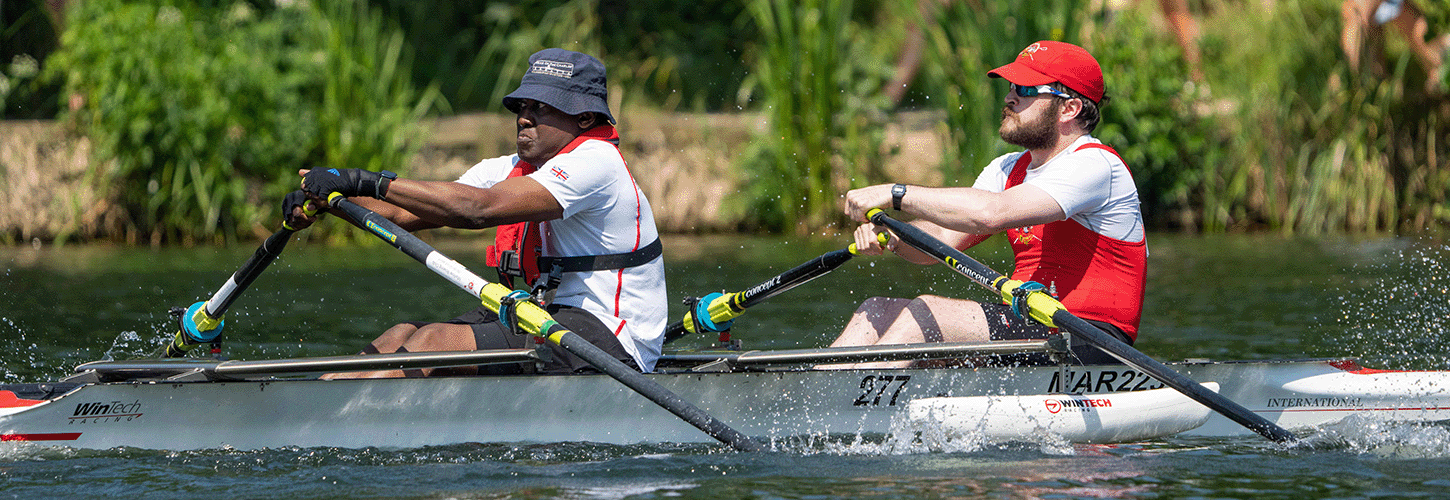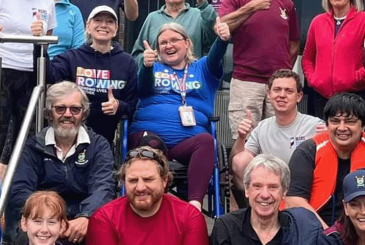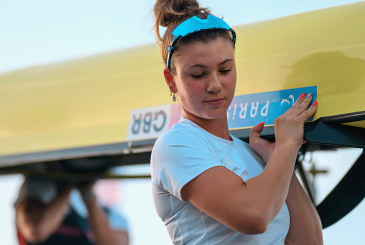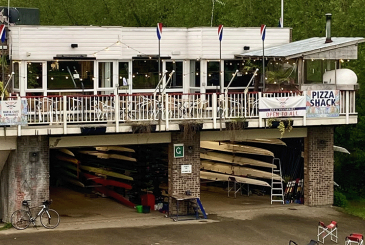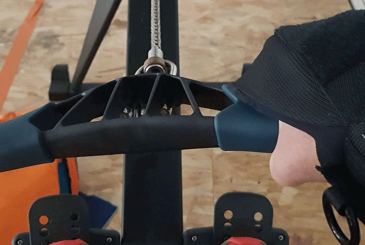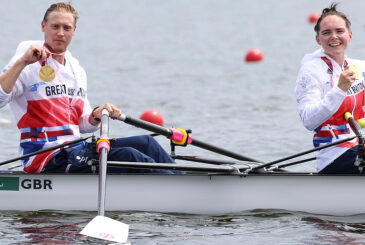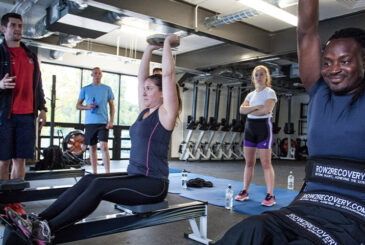Adaptive rowing can be quite a solitary pursuit, with most of it being done in single sculls. But the innovation that the British adaptive community has done with ‘supported adaptive’ rowing has put adaptive crew rowing at the forefront of both training and competition. Adaptive rowing coach Bruce Lynn explains more, including how non-adaptive rowers can get involved
What are supported doubles in adaptive rowing?
A ‘supported double’ is a double scull with one adaptive rower and one non-adaptive rower. It is now the most popular boat class in community adaptive racing in the UK. The concept can extend to ‘supported quads/fours’ as well, but due to smaller numbers and difficulty in aligning impairments, these are rare.
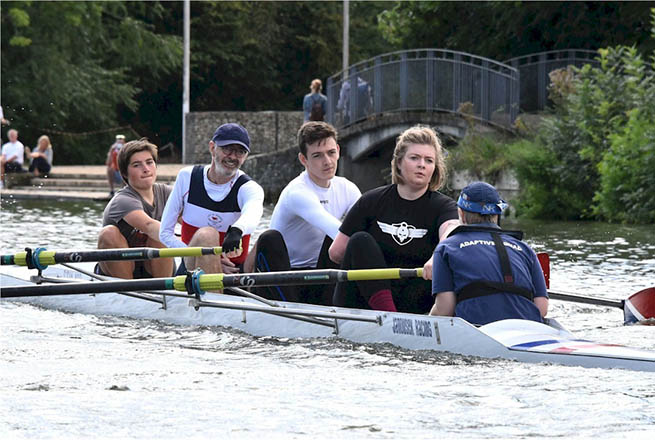
In the USA, the supported doubles are known as ‘inclusive doubles’, and feature prominently in the famous Head of the Charles Regatta.
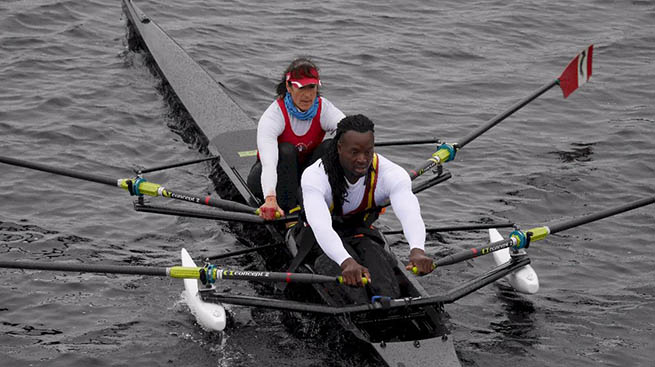
Examples of supported rowing
Visual impairment (VI)
The format started with blind rowing where a sighted rower would sit in bow to steer the boat.
Cognitive impairment (CI)
The support rower helps with steering and navigation, but also enhances safety as a CI rower may be less able to self-rescue in the event of a capsize.
Athletes with one functional arm
The UK has pioneered the ‘supported pair’ for one-armed rowers where the adaptive athlete rows with one hand on a blade and the support rower would row the opposite side. The rowers use one sculling blade each as sweep blades would be too cumbersome for a single hand.
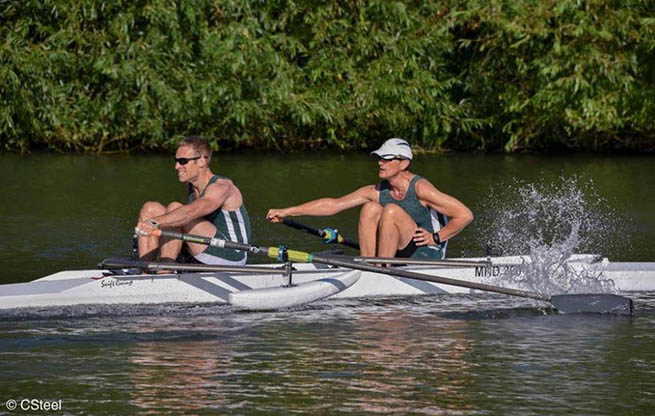
Epilepsy
Rowing in a crew boat can enhance the safety of a rower who has suffered seizures previously (depending on the nature of the epilepsy and the risk assessment performed for that individual) as the support rower can stabilize the boat in the event of a seizure and can also provide assistance to the rower affected (see British Rowing guidelines on Rowing with Epilepsy for more information).
General physical impairment
Some rowers find that powering a boat by themselves is cumbersome and slow, but a support rower can provide a boost of power for a more satisfying outing.
PR1 training
PR1 rowers, who are strapped into a fixed seat and have the highest degree of physical impairment, are the most at-risk rowers on the water due to the strapping holding them into the boat. And, of course, capsize risk is greatest when a rower is just starting out. Unfortunately, most fixed seats don’t fit in standard double sculls and adaptive (wide-bodied) sculls don’t fit standard PR1 riggers (which use shorter blades to accommodate the shorter range of motion possible without a sliding seat). Marlow RC has designed a special PR1 adaptive double scull rigger to use in an adaptive double scull so that a PR1 athlete can row with their normal setup while a coach or support rower makes the boat much more stable and safe.

Coastal rowing
Supported coastal sculling races were included in the World Rowing Beach Sprint Finals (where one athlete had a PR3 classification) and British Rowing Offshore Championships (where they were designated ‘mixed ability’) in 2023. The greater width and therefore stability of coastal sculling boats is helpful.
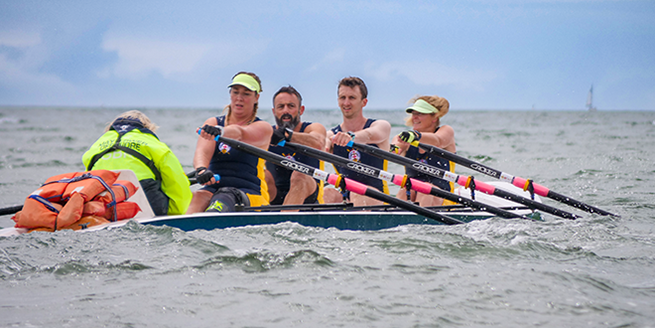
Why is supported rowing popular?
Aside from all the practical reasons for support rowing, perhaps the most prominent one is enjoyment. The support rowing approach enables ‘adaptives’ to experience the teamwork and camaraderie of crew rowing.
Support rowing practicalities
The practicalities of support rowing are pretty straightforward.
VI and CI athletes will have the same sort of stroke as anyone else. With physical disabilities, which alter the stroke motions, the basic rule of thumb is ‘in together, out together‘.
Typically, impaired rowers take shorter stroke (especially if they row fixed seat). This means that the support rower has to determine how they want to shorten their overall stroke to accommodate this. They might shorten all aspects of it, or they might just focus on leg-power and shorten their rock-over and arm-finish. Marlow support rower and coach Paul Thomas even pioneered an alternating stroke technique for rowing with PR1. Because PR1s have no slide, their stroke rate can be 50 short strokes so Paul rows one long, strong stroke, at rate 25, for every other one of his PR1 partner’s strokes. Like so many things in the adaptive rowing world…experiment and adapt to the specific constraints.
Marlow RC support rower Stephen Pickin, who rowed with one-arm rower Kirsty, has this insight about support rowing:
“Rowing one-handed with Kirsty has been one of the most educational things I have done rowing and has benefited my regular rowing hugely. You have to disregard all the conventional wisdom you have been taught about rowing over the years and really re-examine what makes the boat move from the ground up.”
If you are interested in support rowing, talk to your club captain who is most likely to know about adaptive rowing enquiries at your club. And you can also contact British Rowing’s Club Adaptive Group at [email protected], who are happy to provide guidance and support.
Further information about adaptive rowing is available here.
Banner photo: AllMarkOne


